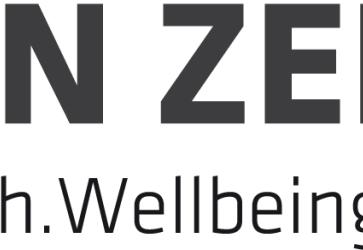

Vision Zero is a global prevention campaign developed by the International Social Security Association (ISSA), which promotes a world without work-related accidents and illnesses. In order to achieve this, we must address all possible work-related risks together and in a self-responsible manner. Vision Zero supports companies and educational institutions in developing a culture of prevention in which safety and health are the basis of all actions.
The Corona outbreak makes us face a new challenge at the workplace. The seven Golden Rules provide useful guidance to address occupational risks at work, which should not be neglected. Vision Zero, promotes a participatory approach amongst employers and workers at the workplace. The Corona crisis shows again how important it is to work together and act responsibly.
Below you will find some information for employers and workers on protective measures regarding the coronavirus.
Measures at work
Refrain from unnecessary social contacts.
- Do not hold unnecessary meetings but use digital means of communication (such as video telephony).
- Avoid unnecessary fieldwork and business trips.
- Enable teleworking to reduce the occupancy rate at the workplace.
- Release employees who have a higher risk of serious illness (e.g. older people, people with medical conditions such as diabetes, heart and lung diseases).
- If possible, increase the distance between employees in the workplace.
- Ventilate the workplace regularly, if possible.
- Strengthen hygiene measures (see below under hygiene at the workplace)
Examples for the reduction of social contacts in shops or restaurants:
- If possible, introduce staggered working and break times so that fewer people are present at the same time.
- Place floor markings to ensure that employees and customers are at least 1 metre apart.
- If there are queues in the shop, mark distances with floor markings between waiting people.
- Move queues outside.
- Let only a few people into the shop or restaurant.
- If possible, place separating disks as "cough protection" between employees or between employees and customers.
Hygiene in the workplace
- Disinfect work surfaces, keyboards and telephones regularly, especially when sharing.
- Ensure that employees, contractors and customers have the opportunity to wash their hands with soap and water.
- Ensure that soap dispensers and disposable towels are refilled regularly - remember to stock up on time.
- Ventilate work areas about 4 times a day for about 10 minutes.
- Spread measures to promote hygiene by posting posters or using other communication channels frequently used in your company.
Personal hygiene
- Avoid unnecessary hand contact e.g. shaking hands.
- Clean your hands regularly and thoroughly with water and soap or disinfectant.
- Keep a distance of at least one – two meters between yourself and other persons.
- Do not touch your eyes, nose or mouth. You can pick up viruses with your hands that enter the body through your eyes, nose and mouth.
- Pay attention to breathing hygiene: cough or sneeze into a paper handkerchief and dispose of it immediately. If no handkerchief is available, keep your mouth and nose covered with your elbow.
If you have symptoms or fear that you are ill, please stay at home and dial your national helpline for medical advice.
What should be done if an employee shows suspicious symptoms in the workplace?
- If an employee is suspected of having a corona virus illness (fever, cough and/or shortness of breath), the following measures should be taken:
- The affected person, if present, should immediately put on a respiratory mask and should go to a separate place to isolate himself or herself from the other employees and should wait there for further instructions.
- Call your national emergency helpline immediately and implement the instructions given to you.
- Restrict contact with the sick person to what is absolutely necessary.
- Make sure that all your employees follow the rules of personal hygiene and, as far as possible, prevent contact within one metre. Encourage your employees to stay at their workplace.
- Inform everyone involved about the situation (including temporary workers and customers involved).
- Identify all persons who have come into contact with the confirmed or suspected affected person and follow the further instructions of the health authorities. Collaborate with them in the epidemiological investigation.
Preventing the spread of infections in the workplace
- Employees who have fever or respiratory problems (cough, sore throat and/or shortness of breath) are recommended to use a respiratory mask (if available). These workers should be isolated and the health authorities should be contacted.
- Speak to employees who have been in a risk area on business or on holiday or who are planning to do so
- Workers who have recently been in risk areas and have fever or respiratory problems (coughing, sore throat and/or shortness of breath) must contact their local health authorities and should stay at home. You should also contact your supervisor by telephone.
- Workers who have recently been in risk areas are strongly advised to stay at home for 14 days (counted from the date of return), to watch out for symptoms and to avoid contact with other people, even if they are symptom-free immediately after the trip.
- Companies should allow people to stay away from work and, where appropriate, allow those affected to work from home to reduce the risk of spreading COVID-19 infection.
- Avoid travel activities that are not absolutely necessary.
- Medical companies (e.g. nursing), companies providing services in medical facilities (e.g. cleaning, security, laundry), airlines, food wholesalers or transport companies are recommended to establish plans for monitoring and measures regarding the occurrence of infections among their employees (taking into account the specifics of the company).
- Employees who deal with customers should be particularly encouraged to maintain personal hygiene by washing their hands or using hand disinfectants. Science suggests that the use of gloves should be avoided, as pathogens are transmitted via soiled gloves (except for employees working in medical facilities with patients or clinical material).
Prepare your facility in case COVID-19 occurs in your facility
- Determine in advance how to proceed if someone falls ill at work (the plan should also include responsibilities and contact persons).
- Consider how you can identify people who might be at risk and protect them in their workplace or whether it is possible to release this person. This may include people who have recently travelled to an affected area or people who are at higher risk of more serious illness. Make sure that there is no stigmatisation or discrimination of these people!
- Instruct your employees, contractors and customers that if the infection spreads in your area, anyone who has even a slight cough or fever (37.3°C or more) should stay at home. Persons who have taken medication such as paracetamol, ibuprofen or aspirin should also stay at home or work from home, as these medications can make the symptoms of the infection go undetected.
- Encourage regular teleworking in your organisation already now.
- Develop a contingency plan in case of increased spread of the disease. The plan should address how you can keep your business running, even if a significant number of employees, contractors and suppliers are absent. Inform your employees, contractors and suppliers about the plan and make sure they know what to do in an emergency.
Which symptoms indicate Coronavirus (COVID-19)?
Coronavirus, called SARS-CoV-2, can cause respiratory disease with high fever and can lead to severe pneumonia. The official name of the disease is COVID-19, but it can be dangerous for people over 60 years of age and anyone with pre-existing conditions.
| COVID-19 | Common cold | Influenza | |
|---|---|---|---|
| Fever | frequent | rarely | frequent |
| Tiredness | sometimes | sometimes | often |
| Cough | frequently (dry) | little | frequent (dry) |
| Sneezing | no | often | no |
| Limb pain | sometimes | frequent | frequent |
| Sniffles | rarely | often | sometimes |
| Diarrhoea | rarely | no | sometimes (children) |
| Headache | sometimes | rarely | often |
| Shortness of breath | sometimes | no | no |
Note: The table is intended for an initial assessment, but does not replace a medical consultation.
Source: WHO, CDC and DocCheck
This document was produced by the International Section of the ISSA on Prevention in the Iron and Metal Industry and the ISSA Special Commission on Prevention.
FURTHER READING
VIEW ALL NEWS






